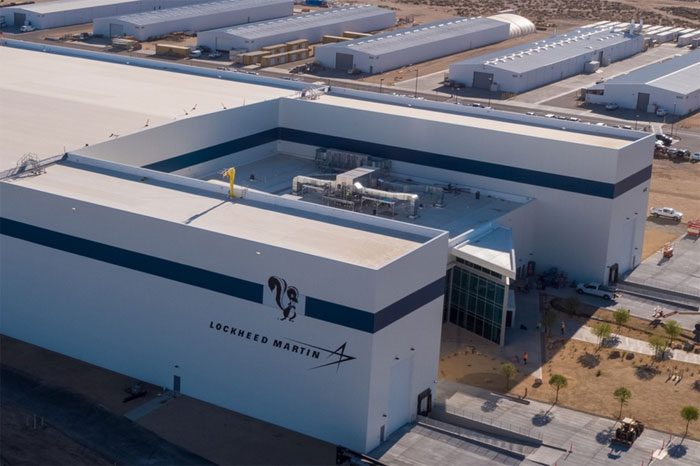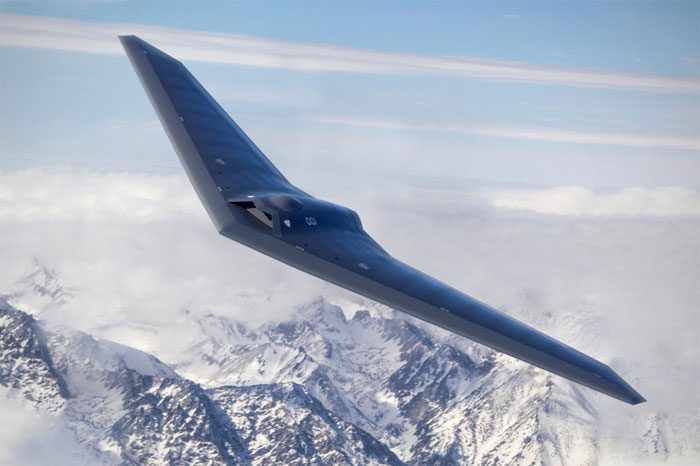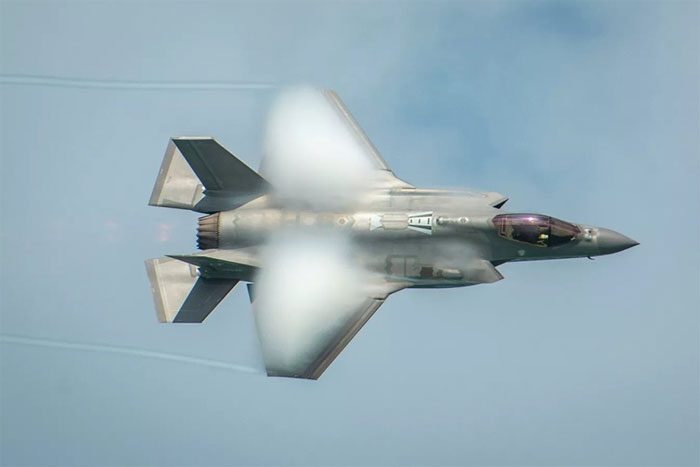The Lockheed Martin defense industrial group has opened its famous secret weapons manufacturing facility, Skunk Works, to the press for a tour.
Located about 90 km north of Los Angeles, this facility is one of the most classified weapons production sites in the world. Here, Lockheed Martin operates the Skunk Works advanced weapons manufacturing plant.
Very few people are allowed to enter the Skunk Works facility. The area is surrounded by tall walls with electronic fences and barbed wire. However, if one looks up to the sky, they might catch glimpses of the secret projects being developed at Skunk Works, according to Politico.
Inside Skunk Works
Last month, Lockheed Martin invited a group of reporters to tour the Skunk Works facility, lifting a portion of the veil on the company’s secretive work for the first time in eight years.
In an official announcement, Lockheed stated that the visit was organized to celebrate the opening of a new modern facility within the Skunk Works campus, which spans over 2 million square meters.
However, the real aim of Lockheed Martin, similar to many other defense contractors, is to garner support for securing additional contracts from the Pentagon amidst tightening defense budgets, Politico commented.
Skunk Works is known for producing the U-2 reconnaissance aircraft, which can gather intelligence and imagery from an altitude of 21 km. Additionally, this facility also manufactures the long-range reconnaissance aircraft SR-71 Blackbird, capable of flying three times the speed of sound.
Another product from Skunk Works is the F-117 Nighthawk, the world’s first stealth fighter jet.
Approximately 85% of the operations at Skunk Works are classified.

The newly constructed facility at Lockheed Martin’s Skunk Works. (Photo: Lockheed Martin).
Upon arriving at the reception center, Lockheed’s guests were taken through underground tunnels to explore various areas of the plant. Lockheed staff closely monitored the visitors to ensure they did not see too much of what should remain confidential.
Jeff Babione, Vice President and General Manager of Skunk Works, stated that the newly inaugurated facility is “the factory of the future.”
The recently completed building is the first new construction at Skunk Works since the 1980s. Instead of being designed for the assembly of a specific aircraft, this facility has no fixed machinery or tools. This means it can be easily reconfigured to accommodate new projects, Babione explained.
This new factory is also the first at Skunk Works to implement a secure wireless communication system, allowing staff to transmit electronic information easily. Previously, all procedures were conducted on paper.
In the next five years, Lockheed Martin plans to invest an additional $2 billion in digital transformation.
Guests walked down a corridor before entering the new factory. A plaque honoring Michele Evans, the former aerospace program director at Lockheed who passed away on January 1 from cancer, was displayed on the left wall of the corridor.
Inside the new factory area, bright lights illuminated the space. Many blueprints were displayed, showcasing how the factory could be designed for future production.
The Factory of the Future
Electronic engineering is the new trend in weapon development. The new construction at Skunk Works is a step towards producing aircraft at a lower cost, thanks to an integrated project pipeline from design to final assembly, Babione noted.
The new Lockheed facility is emerging at a time when the U.S. faces fierce strategic competition from China.
Like many other companies, Lockheed understands the need to reassess its operational strategy to adapt to new developments, as China advances modern defense capabilities such as hypersonic weapons and fifth-generation fighter jets.
As they moved through the underground tunnels, the visitors saw another facility. This is where the X-59 supersonic aircraft is being assembled for NASA, one of the few unclassified projects at Skunk Works.
The X-59 assembly area is separated from the rest of the facility by a wall that reaches the ceiling, ensuring that information about the secret weapons being developed does not leak.
The X-59 is a supersonic transport aircraft designed to minimize the sonic boom often heard on the ground when the aircraft accelerates. The X-59 is approximately 30 meters long with a wingspan of about 9 meters.
“The boom will sound like a car door closing”, Atherton Carty, Vice President of Strategy and Business Development at Lockheed, remarked.
Skunk Works is repurposing many components from previous projects to develop the X-59. The supersonic aircraft uses the canopy from the T-38 training aircraft, landing gear from the F-16 fighter jet, and the engine from the F/A-18 fighter jet, helping to reduce costs.

The unmanned aerial vehicle that Lockheed Martin is developing. (Photo: Lockheed Martin).
In September 2020, Skunk Works announced a project called Speed Racer, aimed at developing a type of winged cruise missile or unmanned aerial vehicle.
Skunk Works is currently focusing on developing hypersonic weapons, such as the AGM-183 missile. Additionally, the facility is pursuing a program to develop the next-generation fighter aircraft to replace the legendary F/A-18 and F-22 jets.
Skunks’ Den is the only room at Skunk Works that is not classified. This room resembles a typical meeting space.
The difference is that it displays about 60 small to medium-sized model weapons, placed behind glass, which have been successfully developed by Lockheed over decades.
Why Did Lockheed Suddenly Open Skunk Works?
Since its inception in 1943, Skunk Works has been a legend. Initially, Skunk Works was responsible for designing and producing the first U.S. fighter aircraft during the escalation of World War II.
In their first project, Skunk Works engineers completed the work and delivered the aircraft in just 143 days, all conducted in temporary tents rented from a circus troupe.
Nearly 80 years later, Lockheed has become one of the world’s leading high-tech weapon manufacturers, with Skunk Works being the site for producing iconic aircraft for the U.S. and its allies.
However, all these successes do not obscure the reality that Lockheed is facing numerous challenges and criticisms.
In recent years, U.S. lawmakers have continuously warned about the exorbitant costs and operational effectiveness of the F-35 multi-role fighter aircraft, a product of Skunk Works. The F-35 has become the most expensive program in Pentagon history.

The F-35 fighter jet developed by Lockheed Martin. Photo: U.S. Air Force.
Despite maintaining a growth trajectory, largely due to contracts with the U.S. government, Lockheed’s stock has struggled in the market since the outbreak of the pandemic.
Recently, a long-time executive at Lockheed, interim Chief Financial Officer Kenneth Possere, unexpectedly announced his retirement for personal reasons. This decision coincided with Lockheed’s announcement of a $225 million loss from a highly classified space program.
Lockheed stated that the aforementioned loss resulted from the program’s performance, which was discovered during a deep investigation into the space program.
“At the conclusion of the project review, as well as based on negotiations with customers, all parties agreed that the total cost to complete the project would exceed the original contract value”, Lockheed’s documents stated.
Due to the classified nature of the space program, it is likely that this project is related to the Skunk Works facility. However, during the reporters’ visit, Lockheed’s leadership declined to comment on the $225 million loss.
Byron Callan, the managing director of the consulting organization Capital Alpha Partners, stated that Lockheed has many reasons to “show off” their production facility.
The Skunk Works facility is making significant investments in digital technology, as Lockheed aims to compete with Boeing and Northrop Grumman for contracts in the upcoming U.S. Air Force fighter development program.
“Many of the items being developed are classified. This is Lockheed’s way of demonstrating that they are a competitive contractor and have made substantial investments in these areas”, Callan said.




















































